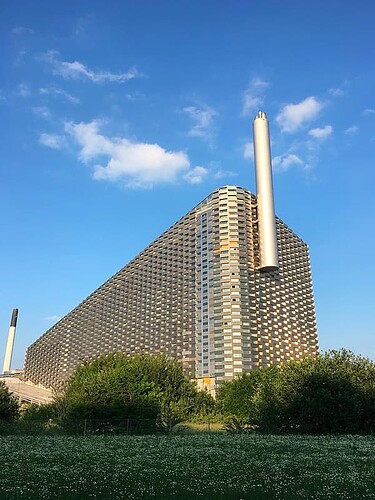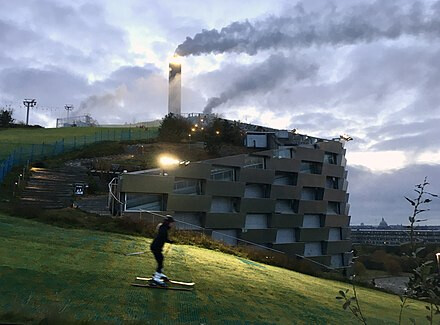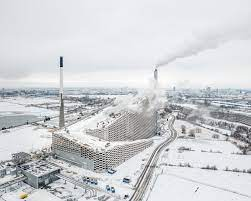This is probably idiotic but what using a system of solar powered buoys that have some kind of reflective material hoisted above the water in the artic ocean w/ a goal of blocking x amount of sun light?
As mentioned before. Changing the albedo of a small part of the earth can completely change the climate and reflective items don’t stay reflective very long without maintenance and you can’t maintain such a surface regularly enough to make a difference.
What are countries like France doing that USA is not?
Also, 2020 has to be the WOAT year to use for comparisons like this. (This may or may not affect your overall point, but I have to think that 2019 would be more representative of whatever reality might exist)
Nuclear
Public transport
Smaller (less travel per person)
Lots of renewables
I.e. it’s a mix of structural advantages and policy choices.
Well, in that case “this doesn’t mean X” was appropriate. Sorry to disappoint you.
Instead of actually responding to what I wrote, you seemed to just assume I said a bunch of other things and responded to those things. If you actually read it, you would notice that I more or less did not dispute any fact you posted. I accepted them all. I simply showed that your conclusions (in that post) did not follow. That’s why I said it was a logic problem.
If you were following the conversation, there were clearly issues where I was asking for more info to gain a better understanding. I asked for that and then others replied with links and explanations.
Ok, here’s one where I don’t understand what you are talking about. Care to elaborate?
To be fair, that is more or less precisely what microbet said.
Average house in France is 1206 sq. ft. Average in the US is 2164 sq. ft.
Average French person eats 83kg of meat per year. Average in the US is 124kg.
Average mpg of a French car is 33mpg, in the US 25mpg.
Average French person drives 1950 miles per year, in the US 2740.
You are all too focused on just solar, wind and nuclear.
Waste to energy and hydrogen are going to play a massive role in a zero carbon economy.
I’m working two massive waste to energy plants right now one will use waste grain and the other manure. Both make natural gas.
You forgot hydro
Can you explain the carbon emission calcs involved in turning waste into natural gas?
Need to consider methane too.
It depends on the kind.
To start it is generally lower carbon than fossil fuel but there is still sometimes some ghg emissions. Often they are coupled with sequestration to make them truly net zero.
But even absent sequestration the process reduces ghg release in two main ways
-
preventing the normal decay of the waste and associated release of methane.
-
displacing fossil fuel use.
So the natural gas your plants make is different from regular natural gas (i.e. the fossil fuel kind)?
The end product is close to the same as natural gas derived from fossil fuel.
The regular natural gas is already sequestered and great efforts are taken to unsequestor it. The carbon from waste largely comes from the atmosphere in the first place.
These two posts back to back are… Interesting.
You missed what I was saying right back at the start, in part because you don’t understand basic concepts like the difference between dispatchable and intermittent energy sources.
So sure, I’ll guess I’ll explain this to you as you patronize the shit out of me from a place of profound ignorance.
Nothing wrong with not knowing this stuff, it’s being a smug about it that bothers me.
Anyway.
Dispatchable means you can control whether it’s on or off. It’s typically used in contrast to variable or intermittent energy, which is primarily wind and solar.
Noting that even this distinction is a simplification, but let’s stay with it.
So nuclear being the cheapest dispatchable carbon free generation is true, at the same time as it’s true that solar and wind are the cheapest carbon free technology in general AND the cheapest technology of any type.
What you see as conflicting information about costs, is likely instead a nuance that either you or your sources are missing.
Wind and solar are very cheap on a per MWh basis, anywhere between 30 and 50 per mwh, and they are going to get cheaper and cheaper. I’ve seen forecasts as low as 10 to 15 for solar.
This means that the cheapest way to produce most of our energy over the next 20 years is wind and solar, and it’s not even close. The issue is what you do in the gaps when the wind isn’t blowing and the sun isn’t shining.
You have to compare a mix of technologies.
A grid with mostly renewables, plus some combination of storage, transmission, and biofuels or carbon capture will be the cheapest way to achieve zero emissions.
Nuclear gets in the way of renewables in terms of how each operates, so you cant really have high renewables and high nuclear. A grid like that just doesn’t function well.
Very large grids with existing nuclear will do okay for a while, and in those same grids if you can get nuclear to market fast, it will do okay for a while, but they will all end up as fairly useless (and hence unprofitable) assets well before the end of their 50 plus year lives.
Exactly. Well said.
My project portfolio right now is pretty cool.
Two waste to RNG plants
4 solar power plants
3 net zero traditional power plants (via sequestration)
Two fossils fuel plant retrofits for co2 capture
One hydrogen facility. (Actually ammonia but same thing)


